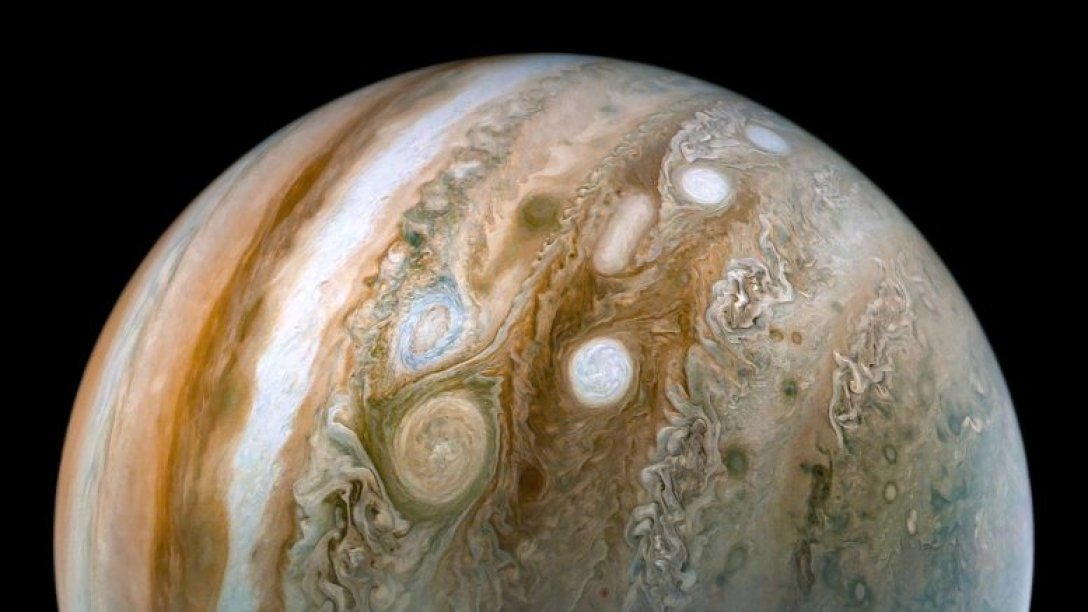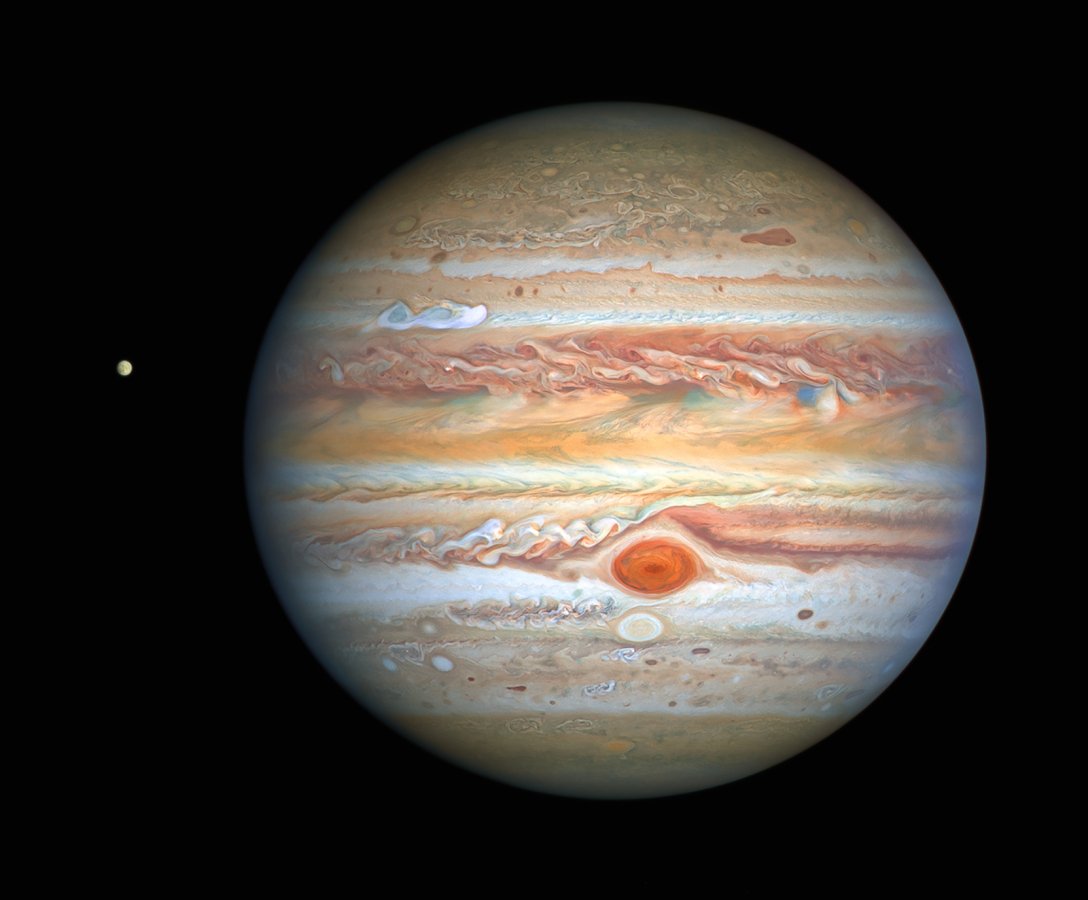Astronomers have examined Jupiter and found something unusual on the giant planet (photo).
Astronomers have disproved a long-held assumption that the famous swirling clouds of Jupiter are composed of frozen ammonia, marking a significant discovery on a planet that was thought to be well-studied. New data regarding the ammonia content in Jupiter's atmosphere contradicts existing models of the gas giant's atmospheric composition. The research was published in the journal Earth and Space Science, as reported by Space.
Jupiter's atmosphere primarily consists of hydrogen and helium, with trace amounts of ammonia, methane, water vapor, and other gases. These latter components condense at various levels, forming swirling clouds that reflect sunlight and create an impressive view of Jupiter.
Due to the presence of ammonia in Jupiter's atmosphere, which condenses and forms clouds at the lowest pressure among all known gases, scientists had assumed that the uppermost clouds of the planet were composed of ammonia ice.

Researchers employed a method to assess the concentration of methane and ammonia in Jupiter's atmosphere by measuring the amount of light absorbed by these gases at their characteristic wavelengths. As a result, they successfully created a new, highly accurate map of ammonia distribution in Jupiter's clouds.
The study's authors found that the reflected light originated from cloud layers where the pressure and temperature would be too high for ammonia to condense. Therefore, scientists concluded that ammonia ice cannot be the primary component of Jupiter's clouds.

Modeling indicated that the outer clouds of Jupiter are likely composed of ammonium hydrosulfide and possibly smog formed from photochemical reactions in the atmosphere, as the cloud colors do not correspond to pure ice.
The findings suggest that a variety of complex photochemical processes are occurring in Jupiter's atmosphere. Pure ammonia ice clouds are relatively rare and confined to small areas of the atmosphere, according to researchers.
According to astronomers, the presence or absence of ammonia in various regions of Jupiter's atmosphere serves as a good indicator of weather processes on the planet, making it crucial for understanding the nature of the gas giant as a whole.
While scientists have made a significant discovery on what seemed to be a well-studied planet, there are still some aspects that need clarification. It is likely that the ammonia levels in Jupiter's clouds vary with altitude, but this remains to be verified.